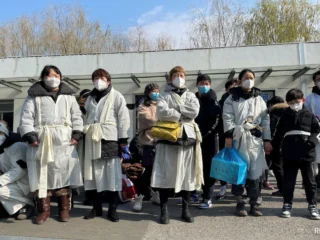New Delhi, 23 July 2025: A sudden surge in chikungunya cases across several countries has triggered health alerts, with the World Health Organization (WHO) issuing a warning about the fast-spreading mosquito-borne virus. Governments and health agencies are on high alert as warmer temperatures, heavy rainfall, and poor mosquito control contribute to the ideal breeding conditions for Aedes mosquitoes, the primary carriers of the virus.
Why chikungunya is becoming a global threat
Chikungunya, once confined to tropical regions, is now rapidly making its way into temperate areas due to climate shifts and increased global travel. The virus causes high fever, severe joint pain, rashes, muscle aches, and intense fatigue. While most infections are not fatal, the illness can severely impact quality of life, with joint pain lingering for weeks or even months. Some vulnerable individuals, including older adults and those with chronic illnesses, may develop complications such as prolonged arthritis or neurological symptoms.
WHO warning and countries on alert
The WHO has issued an advisory urging nations to enhance disease surveillance, mosquito control, and community awareness. Countries across Asia, Latin America, and parts of Africa have reported an unprecedented rise in confirmed cases, with several cities reporting thousands of infections in just weeks. In densely populated urban centers, authorities are struggling to manage outbreaks due to poor sanitation, stagnant water, and limited access to public health resources.
Symptoms and how to differentiate it from dengue or Zika
Though similar in transmission to dengue and Zika, chikungunya has distinct symptoms such as debilitating joint pain, which can mimic arthritis and persist even after the fever subsides. Unlike dengue, chikungunya doesn’t typically cause internal bleeding or drastic drops in platelet count, and unlike Zika, it is not known to cause severe birth defects.
Public health measures and personal precautions
Governments are intensifying fogging operations, draining mosquito breeding sites, and urging people to use repellents and protective clothing. Individuals are being advised to keep their surroundings clean, use mosquito nets, and seek medical attention if symptoms like high fever and joint stiffness develop.
Can chikungunya become life-threatening?
Though chikungunya rarely causes death, the widespread nature of current outbreaks has raised concerns about overwhelmed health systems and economic burdens due to long recovery times. Persistent joint pain, fatigue, and in some cases, neurological effects, are being observed even in mild cases. Experts warn that if mosquito control is not improved and public awareness remains low, the infection rate could grow exponentially. Conclusion With chikungunya cases rising sharply and global warnings from the WHO in place, the virus is proving to be more than just a tropical illness. Nations must act swiftly with preventive measures and community engagement to halt the spread before it turns into a widespread epidemic.






